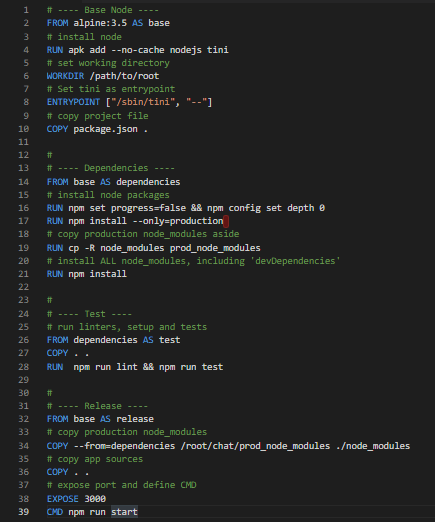

#NODEJS DOCKERFILE INSTALL#
USER node RUN npm install COPY -chown=node:node. ĮXPOSE command to expose port EXPOSE 3000 CMD įinally your Dockerfile should be like this… FROM node:12-alpine RUN mkdir -p /home/node/app/node_modules & chown -R node:node /home/node/app WORKDIR /home/node/app COPY package*.json. USER node RUN npm installĬopy your application code with the appropriate permissions to the application directory on the container: COPY -chown=node:node. WORKDIR command to set working directory WORKDIR /home/node/appĬOPY command to copy package.json file. RUN mkdir -p /home/node/app/node_modules & chown -R node:node /home/node/app RUN command to make sure to grant necessary permission into node_module and app folders, so that when npm install can be executed.

Create a Dockerfile file in the same folder, with no extension (not Dockerfile.txt). All you need are the app.js, package.json and package-lock.json files. Stop this process and let’s create a Docker Image from this. you can find latest node image over here FROM node:12-alpine Now you can run node app.js and make sure it works. Every Dockerfile should start with FROM command to add base image. dockerignore file in order to remove files that not belongs to docker image.Īt the time of writing, latest nodejs image is 12-alpine. Using Dockerfile, you can specify what will be included in your application container when it is executed and container environment.Īdd following line of instructions into your file. You can use any text editor to work on this file. Step 3 : Create Docker file, build image and run on local machine. First create a file named Dockerfile inside the NodeJS application. This will give command line support and small virtual machine environment to run docker containers.


 0 kommentar(er)
0 kommentar(er)
